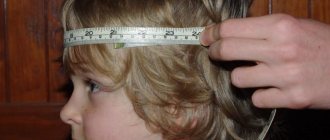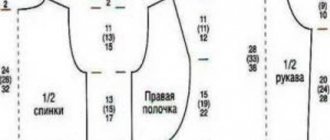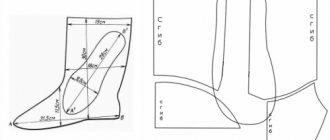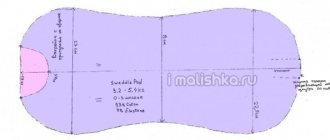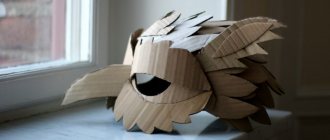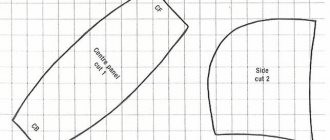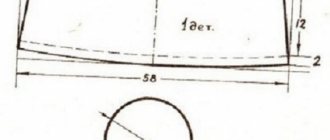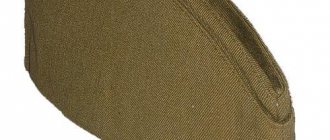The first frosts are coming and the cold season is approaching. Winter will last for several months, and the sun will no longer delight you with its warmth, and snowstorms and frost will become faithful companions for the near future. The human body is designed in such a way that the skin fulfills its natural protective function - retaining heat and protecting vital organs from hypothermia.
Hands are the part of the body that is subject to cooling faster than others, giving off its heat to the external environment. If your hands are warm, then the feeling of comfort will be constant and you can easily enjoy a winter walk. But as soon as you leave them unprotected, they will very soon begin to turn red and go numb, tingling the skin unpleasantly. A pair of gloves or fleece mittens that are easy to take with you will help keep your hands warm - they won't take up much space, but will keep you warm in any weather.
The amazing properties of fleece
Fleece is a general term for various synthetic fibers that has a brushed surface on the fabric. This effect is obtained by adding free fibers to the knitted fabric, which are bonded together by exposure to high temperature or chemical reagents. The best known method is the use of polyester fiber, but other fibers are also commonly used - wool, cotton, acrylic or viscose. Fleece is very lightweight compared to the thickness of the fabric, retains heat well and dries quickly, does not shrink or wrinkle.
In recent years, fleece has become very popular and is used to make sportswear, children's or casual clothing. A characteristic feature of fleece fabrics is their ability to resist moisture absorption, as they remain warm and dry for a long time. Products made from it are ideal for traveling and many people prefer to take them on the road rather than heavy ones made from wool.
Mittens – foxes
A funny decor - a fox's face - will be a wonderful decoration. For appliqué elements, base material or felt is used.
The parts are pre-glued with a “cobweb” or fixed with running stitches. Then machine stitch the top.
Pattern for mittens
How to sew mittens from fleece? The pattern will help you make cute mittens that are ideal for everyday use - they are not bulky and are easy to put in your purse or pocket. If necessary, they will reliably protect your hands from wind and low temperatures, maintaining their water-repellent properties for a long time, and dry quickly.
These properties will help your hands stay dry and warm for a long time, even during rain or snow. To enhance the warming effect, sew fleece mittens with your own hands. They will be much warmer than gloves since the fingers are not isolated from each other and this will help overall heat transfer. You can make them two-layer - the lining for fleece mittens can be very diverse; here they use a knitted base or make internal parts from fleece to enhance the insulating effect.
Made from fleece mittens, the pattern of which does not take much time, can be decorated with embroidery or beads, appliqué, and the work itself will bring real pleasure. These mittens will be an excellent solution for children who love to frolic in the snow and often do not notice that the mittens get wet and their fingers begin to freeze.
They can withstand washing well and dry quickly - this will allow your child to look clean and tidy every day and keep his hands safe.
Sewing children's products is always a joyful activity that you do with love, wanting to create clothes that are not only beautiful, but also practical. For making mittens, children's hands are so tender, fleece is ideal - it does not require additional processing of the cuts, its edges do not fray or fray. This quality is very useful, because children's fingers are very tiny, and the baby should be comfortable and safe. Cutting them will take no more than 30 minutes, but they will become a very important and functional item in your little one’s wardrobe.
The shape, type and method of processing parts can be very diverse - this allows you to choose the model that you like best.
How to insulate knitted mittens
Sometimes ordinary winter mittens are not as warm as we would like. If you sew fleece into mittens, the problem will be solved.
In order for the lining piece to fit perfectly, it is advisable to create a pattern yourself based on the finished mitten.
- Trace the palm and thumb.
- The resulting patterns were like this.
- Cut out the necessary parts and cut them out.
- Sew the elements of the future lining.
- Place the lining inside the product. Sew connecting stitches by hand.
- To prevent the inside from turning inside out when removed, the crowns are secured with several hand stitches.
Products are decorated as desired, for example, funny animal faces.
This educational video will show you how to insulate mittens.
Mittens for babies
Before starting work, you need to make a template of a child’s hand - this can be done by placing your palm on a sheet of thick paper or cardboard.
You should not make the pattern too wide or narrow, as the mittens will either fit loosely on the hand or squeeze it too much. In this case, the girth in the area of the hand can be free and slightly elongated - this will allow you to hem the bottom and insert an elastic band for better fixation of the fleece mitten.
The pattern is made as follows: take a piece of fabric and fold it in half, transfer the mitten template along the contour lines, leaving a small distance for the side cuts. To do this, you can use soap if the fabric is dark, or a special marker that will disappear after washing.
Machine stitch along the contours of the parts, making sure to secure the stitching in the cuff to avoid tearing of the stitching and delamination of the parts in the future.
Sewing rules
So, the pattern of mittens made of fur or any other material has been created, now they need to be cut and sewn. When cutting, you should take into account the future use of mittens. If these are just work gloves, then they need to be made a little wider, although not too wide, so that it is comfortable to work in them. If necessary, an additional element made of leather or special rubber is cut out and sewn onto the handheld part. This is done so that the mittens do not slip on the surface while working.
There are some nuances in sewing mittens made of fur or sheepskin. Very often, such material is sewn on the front side. The seam is an external one and should be as neat as possible; no threads should stick out from it. The fur is cut with a pile in one direction, even if it is inside the mittens. Fur or sheepskin lapels can be sewn separately by cutting out an additional detail, or you can immediately provide them on the main pattern.
Work gloves are often made from thick fabric, such as tarpaulin. The peculiarity of sewing this type of product is to remove the seams, otherwise they will rub the skin during operation. Therefore, you will have to use a backstitch or make a flat seam by hand.
Mittens are a necessary item in the household. They will protect your hands from frost, wind, moisture, as well as from bruises, cuts and aggressive substances during various works. Using the proposed patterns, you can sew not only work gloves for men, but also oven mitts, and even bags for children's New Year's surprises. In fact, mittens are a necessary thing in many situations, because they help us out so often.
Mittens for babies with elastic
Let's look at how to sew mittens from fleece step by step. The pattern of the mitten part, if it is made with an elastic band, is laid out on the table, wrong side up. Place the elastic band at a distance of 1.2-1.5 cm from the edge of the mitten. Turn the flap inward and cover the elastic.
Sew along the folded edge, making sure not to catch the elastic. When the stitching on the first mitten is almost finished, take the second half and fold the bottom edge along the elastic in the same way as you did with the first part of the pattern. It is necessary to sew the elastic into both parts of the mitten, without tearing the thread - in one continuous line.
Place the resulting pieces together, right sides inward. Gather the fabric and stretch the elastic to achieve the desired stretch result.
Now machine stitch along the entire perimeter of the mitten, and make a tack at the junction of the parts and the elastic. When you reach the end of the stitch, almost to the opposite wrist, pull the fabric back to finish the seam. In this place it is necessary to tension the fabric so that the seam is not very rough. Trim the threads and excess ends of the elastic.
Sewing is finished. Turn the pieces right side out. The product turned out great, and you can get ready for a walk, you just need to put on mittens. Children's fun is now not scary.
Sewing potholders using patchwork technique
Housewives often sew oven mitts from everything they have at home. Working in the patchwork style not only saves money from store-bought options, but is also a very beautiful attribute for a housewife. In order to make such a product you need:
- Prepare scraps of various fabrics and cut them into squares, join them together on a machine;
- Cut pieces of fabric into arbitrary shapes: birds, hearts, etc.;
- Prepare the base of the potholder and attach decorative elements to it;
You may be interested in: Pattern and sewing procedure for Barbie dolls
Important! For potholders, it is better to use different classes of fabric with different shades and designs.
Patchwork potholders
Recommendations for making patterns
When the child is already an adult and very active, the mittens are made according to a different pattern. Fleece mittens, the pattern of which gives the thumb unlimited freedom to play, are cut out of several parts. Use the template provided. The parts are cut out after making all the necessary changes. To do this, you need to correctly determine the size of your child's palm. Take note of a few recommendations:
- 1. When making a template, add 1.0 cm to the pattern for a loose fit - this will allow you to connect the side sections without damaging the model.
- 2. The connection of the palm parts for processing the thumb sections is performed with a seam allowance of 0.7 cm.
- 3. If the mittens are double, then the fleece mitten lining should be slightly smaller than the upper parts - this will ensure freedom of movement.
- 4. In the area of the hand, the girth can be made longer - this will avoid exposing the area of skin between the coat sleeve and the mitten, especially when playing with snow.
- 5. Details can also be made with a decorative lapel, like cuffs. In this case, the inner part is cut out a little longer, so that when turned up, the lower (inner) part overlaps the upper one.
Fleece mittens for teenagers
Before you start cutting fleece, cut out the parts of the mitten on a piece of waste fabric. Try it on, make adjustments, and if necessary, make adjustments to the existing template. After all the corrections, transfer the template to a piece of prepared fleece, trace the contours, and make patterns for the parts.
At the first stage of work, sew two parts of the palm. The stitch should be made around the thumb, continued along the seam crossing the palm, and secured.
Place the top and bottom pieces together, align the side edges, and sew.
Repeat connecting the parts for the outer parts of the mittens.
Connect the resulting mittens along the bottom line, as shown in the picture.
Leave a small gap in the seam so you can turn it right side out. Machine stitch along the bottom of the mitten, at a distance of 1.8-2.0 cm from the bottom edge - this will allow you to fix the two parts together. Turn the mitten halves right side out. Close the remaining cut with a needle using small stitches.
Mittens with separately cut finger
The finger pattern is designed for left and right hands, so the parts are cut out in mirror images.
- First, stitch the main details along the contour.
- Then the elements of the finger are sewn together and neatly connected to the cuts of the hole.
- A tightening elastic band is inserted and the bottom of the product is processed.
Mittens for the whole family
Master class (MK) “Fleece mittens” – over! The mittens are ready! Now the child is not afraid of either snow or frost. We start a snowball fight, and even an ice fortress is within our power, because our fingers are safely hidden, and we have fleece mittens on our hands. Did you find the pattern difficult? Sew mittens for your husband, and make a warm scarf from the leftover fabric - this will be a good gift, because love and tenderness, the warmth of caring hands are invested in it.
We sew fleece mittens for the whole family! This slogan will be your calling card, and improvising with various details and finishes will help you create beautiful and original products that will bring creative joy from the work done.
